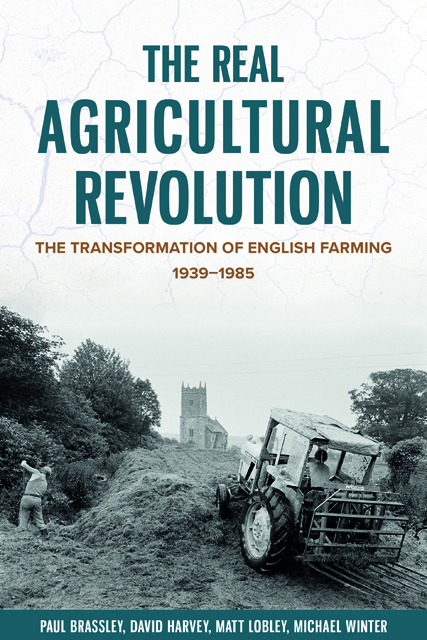Book contents
- Frontmatter
- Contents
- Figures and Tables
- Preface and Acknowledgements
- Abbreviations
- 1 Introduction: Exploring Agricultural Change
- 2 The Organisation of Agricultural Science, 1935–85
- 3 Knowledge Networks in UK Farming, 1935–85
- 4 Agricultural Policy, 1939–85
- 5 Dairy Farming
- 6 Land and Capital
- 7 Labour and Machinery
- 8 Specialisation and Expansion
- 9 The Declining Enterprises: Pigs and Poultry
- 10 Conclusions
- Bibliography
- Index
8 - Specialisation and Expansion
Published online by Cambridge University Press: 04 January 2024
- Frontmatter
- Contents
- Figures and Tables
- Preface and Acknowledgements
- Abbreviations
- 1 Introduction: Exploring Agricultural Change
- 2 The Organisation of Agricultural Science, 1935–85
- 3 Knowledge Networks in UK Farming, 1935–85
- 4 Agricultural Policy, 1939–85
- 5 Dairy Farming
- 6 Land and Capital
- 7 Labour and Machinery
- 8 Specialisation and Expansion
- 9 The Declining Enterprises: Pigs and Poultry
- 10 Conclusions
- Bibliography
- Index
Summary
In the 1940s and ‘50s, many English farms were small, although not as small as those of continental Europe (even in 1970, the average farm size in the six original members of the European Union was only 31.4 acres). Cornish farms were especially small; the National Farm Survey of 1941–2 revealed that 82 per cent of them were of less than one hundred acres, compared with 71 per cent in Devon and 64 per cent in Dorset. Over the following three decades, they grew in size, and whereas the average size of a holding in England and Wales in 1944 was 81.7 acres, by 1983 it was 155.3 acres. The size of an average dairy herd grew to an even greater extent, from fifteen cows in 1942 to sixty-seven cows in 1985, as table 5.1 reveals, so it logically follows that farms that remained as milk producers must have specialised and dispensed with some enterprises in order to concentrate on dairy farming. This, as we shall see, resulted in the more effective use of capital equipment and made it easier for farmers and their workers to keep up to date with changing technologies, and to some extent resulted from the desire to achieve these desirable outcomes. This chapter examines these changes in farm size and the process of specialisation.
Farm Size Changes
As table 8.1 shows, the decrease in the number of holdings over time was not evenly spread over the various different farm size groups. It was the smaller farms that tended to go, while the number of farms with more than one hundred acres increased. This applied to the structure of farming in the three south-western counties as much as to the national picture. By 1974, Cornwall still had more than the national average number of farms of less than one hundred acres, but the number of sub-fifty-acre farms had decreased considerably since 1950. In Devon and Dorset, where there were fewer sub-fifty-acre farms, but more fifty- to one hundred-acre farms than the national average in 1950, it was the smaller farms that disappeared and those with more than 100 acres that grew in number.
- Type
- Chapter
- Information
- The Real Agricultural RevolutionThe Transformation of English Farming, 1939-1985, pp. 199 - 215Publisher: Boydell & BrewerPrint publication year: 2021



